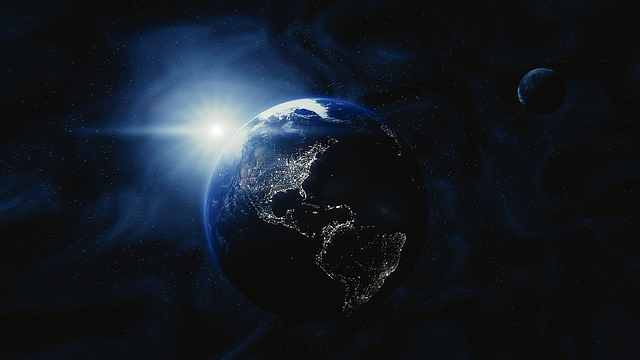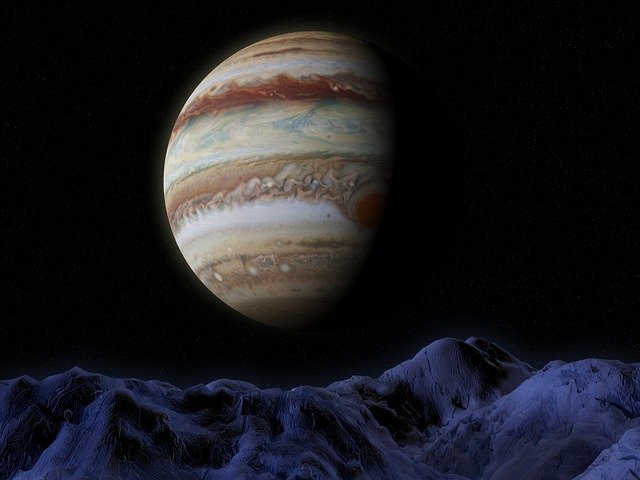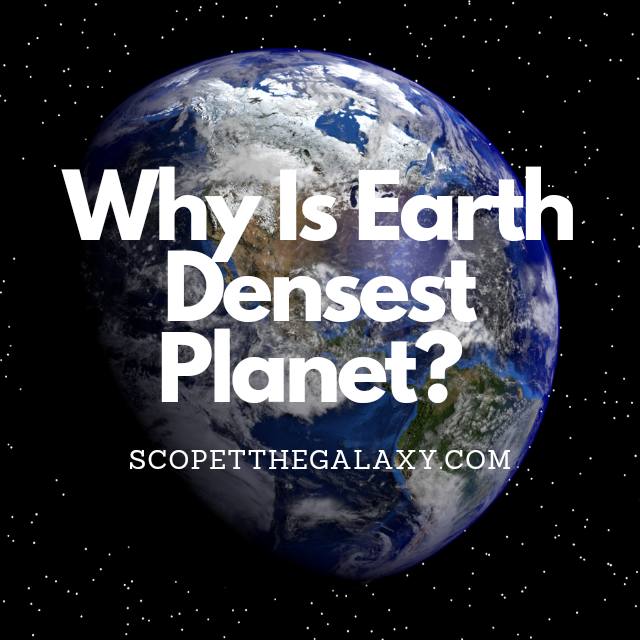*This post may contain affiliate links. This means we may make a commission if you purchase an item using one of our links*
Earth is the densest planet in our Solar System. The Earth’s density is 5.5 grams per cubic centimeter. The Earth’s density is high because it has a large, heavy nucleus and contains many different materials, such as metals and rock.
Continue reading to learn why terrestrial planets are denser than gas giants, how much Earth would weigh if it were the size of Jupiter, plus discover which object is the most dense in our Universe.
Why Are Earth-Like Planets More Dense Than Gas Giants?
Table of Contents

The “Earth-like” terrestrial planets have a higher density than the gas giants because they’re made up of solids and liquids, while gas giants are made up of gases.
Gas giants – such as Jupiter and Saturn – possess a far lower density than the Earth because they consist primarily of light gases such as hydrogen and helium. The “ice giants” – Uranus and Neptune – are also less dense than the Earth because they contain large quantities of hydrogen and helium plus icy compounds consisting of water, ammonia, and methane.
In contrast, the Earth-like inner planets – Mercury, Venus, Earth, and Mars – are denser because they only possess small quantities of hydrogen and helium. The rest of their composition is heavier elements such as iron, silicon, and magnesium.
The Earth consists of around 30% iron and oxygen, 15% silicon, and 14% magnesium. The second most dense planet in the Milky Way is Mercury; it has an estimated density of 5.427g per cubic cm, only a fraction lower than Earth, thanks to its composition of metals and silicate material.
Mercury has a slightly lower density than Earth because its smaller size means that it is subject to far lower levels of compression. Instead, its high density is thanks to the iron-rich core; scientists believe that iron and nickel make up as much as 70% of the planet’s total mass.
In contrast, Saturn – the least dense of the gas giants – has a mean density of 0.687g per cubic cm, a density lower than water. While Saturn also has a dense core composed of hydrogen and helium, this rocky center accounts for far less of the planet’s total area, with the outer layers comprising much lighter gases.
Are There Other Celestial Bodies More Dense Than Earth?
Neutron stars are the densest form of matter that we know. They are formed by the gravitational collapse of a supernova and can be as small as 12 miles in diameter.
Neutron stars have an outer crust composed chiefly of iron and an inner core consisting of neutrons. They have a mass of about 1.35 times our Sun’s and a density of approximately 10 trillion times greater than our own planet Earth’s average density.
The density of a neutron star is roughly 100 trillion grams per cubic cm; just one teaspoon of a neutron star would weigh around a billion tonnes! The neutron star is so dense because it has been crushed by gravity to its limit. For more pressure to be applied, you would need some additional force not present in the neutron star (such as from nuclear reactions).
How Heavy Would Earth Be If It Was The Size Of Jupiter?

Earth’s mass is 5.972 × 10^24 kg, making it the densest planet in our solar system; still, it is far smaller than some gas giants such as Jupiter. The fifth planet from the Sun could house more than 1,300 Earths inside its body, and its radius is 11 times greater than the radius of Earth.
If you could walk on a Jupiter-sized Earth, you would experience around 11 times more gravity. For example, if you weigh 100lb on Earth, you would weigh about 1100lb on Jupiter-sized Earth. And there’s no way you could burn off the excess pounds – you wouldn’t even be able to stand up.
Scientists estimate that the maximum gravity a human can withstand would be around five times that of Earth; a Jupiter-sized Earth is more than twice that amount, meaning that you would struggle to breathe. And it’s not just you who would be heavier; the increased gravity would also raise the atmospheric pressure.
And the sheer density of this new super-Earth could severely affect the galaxy. While the Sun would remain 250 times as massive as super-Earth, thus keeping the other planets in orbit, Earth could start to exert a gravitational pull onto other celestial bodies and send them on a collision course with other planets.
Is Earth’s Core Its Densest Part?
The Earth comprises a solid, liquid, and molten mix of different elements. The outermost layer is the mantle, consisting mainly of silicate rocks and metal ores. The next layer is called the outer core, which consists primarily of iron and nickel. The innermost part of the Earth’s core is called the inner core, which consists mainly of an iron-nickel alloy that the heat has not melted from above.
Earth’s core is the densest part of the planet because it is made from solid, heavy elements such as iron and nickel. It has a radius of 3,500 kilometers and an estimated mass of 2.72 septillion kilograms. This means the density of Earth’s core is between 9.9-12.2g per cubic cm.
The core is around twice the average density of Earth; humans could never get to the center of the planet because the pressure would be far too great.
Summary
Earth is the densest planet in the solar system, thanks to its size and composition. The terrestrial planets have a higher density than the gas giants because their bodies are made up of heavier elements. Earth is the densest of all the planets because its larger size allows for greater compression of these heavy elements.
References
How Dense Are The Planets? – Universe Today
Neutron Star | COSMOS (swin.edu.au)
What If Earth Was the Size of Jupiter? | What If Show

